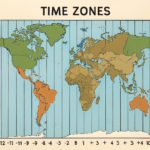
The Rubik’s Cube, a colorful and challenging puzzle, has captivated millions since its invention in 1974. Known for its intricate design and the mental agility required to solve it, the cube has become a staple in both recreational and competitive settings. Beyond the classic 3×3 version, the Rubik’s Cube has inspired a wide range of variations, educational tools, and even advanced technology like solving robots. Whether you’re a beginner or an experienced cuber, there’s always something new to explore in the fascinating world of the Rubik’s Cube. Here are some interesting facts that highlight its versatility and enduring appeal.
Invention Year: The Rubik’s Cube was invented in 1974 by Ernő Rubik, a Hungarian architect and professor of architecture. Initially designed as a teaching tool to help explain three-dimensional geometry, Rubik’s creation was not intended to be a toy. He called it the “Magic Cube,” and it was first sold in Hungary in 1975. The cube’s design features a 3×3 grid on each face, allowing for a myriad of combinations as the individual squares can be rotated independently.
Original Name: The original name of the Rubik’s Cube was the “Magic Cube” (Bűvös Kocka in Hungarian). This name reflected Ernő Rubik’s intention to create a puzzling object that captivated users with its seemingly magical ability to change form. The cube was rebranded as the Rubik’s Cube when it was licensed to the Ideal Toy Corporation in 1980 for international distribution, which contributed to its global popularity and recognition.
Global Popularity: Since its introduction, over 350 million Rubik’s Cubes have been sold worldwide, making it one of the best-selling puzzles and toys in history. Its popularity surged in the 1980s, leading to a cultural phenomenon that included competitions, clubs, and a dedicated following of enthusiasts. The Rubik’s Cube has become an iconic symbol of intelligence and problem-solving, appealing to people of all ages.
Colors: The standard Rubik’s Cube consists of six faces, each painted a different color: white, yellow, blue, green, red, and orange. The arrangement of colors allows for a visually engaging puzzle that challenges users to return each face to a single color after scrambling it. The distinct colors also facilitate the learning of algorithms and solving techniques, as cubers often refer to specific colors when describing moves and sequences.
Combinations: The Rubik’s Cube has an astonishing 43 quintillion (43,252,003,274,489,856,000) possible configurations. This vast number illustrates the complexity of the puzzle and the challenge it poses to solvers. Despite this seemingly insurmountable number of combinations, mathematicians and computer scientists have developed algorithms that can solve the cube from any position, often in 20 moves or fewer—a concept known as “God’s Number.”
World Record: As of 2023, the world record for the fastest 3×3 Rubik’s Cube solve is approximately 3.47 seconds, achieved by Yusheng Du in 2018 during the Wuhu Open in China. This record highlights the incredible skill and speed of competitive cubers, who practice extensively to improve their solving techniques. The world of speedcubing has evolved significantly, with competitors utilizing advanced algorithms, finger tricks, and specialized cubes designed for optimal performance.
First World Championship: The first Rubik’s Cube World Championship took place in Budapest in 1982, attracting competitors from around the globe. This event marked a significant milestone in the history of the Rubik’s Cube, establishing a formal competitive scene that continues to thrive today. The championship showcased various solving methods and fostered a community of cubers, leading to the establishment of the World Cube Association (WCA) to govern future competitions.
Speedcubing: Speedcubing refers to the practice of solving the Rubik’s Cube as quickly as possible. This competitive sport has gained immense popularity, with enthusiasts training rigorously to improve their solving times. Speedcubers often use specific techniques, such as the CFOP method (Cross, F2L, OLL, PLL), to optimize their solving process. Competitions are held worldwide, featuring multiple events, including one-handed and blindfolded solving.
Rubik’s Cube in Space: The Rubik’s Cube has made its way to the International Space Station (ISS), where astronauts have used it for entertainment and stress relief during long missions. The cube’s compact size and engaging nature make it an ideal pastime in the confined environment of space. It serves as a reminder of human creativity and ingenuity, even in the most challenging conditions.
Official Competitions: The World Cube Association (WCA) was established to govern official Rubik’s Cube competitions worldwide. Founded in 2004, the WCA sets the rules for competitions, maintains records, and organizes events that bring together cubers from various backgrounds. The association has played a crucial role in promoting the sport of speedcubing, ensuring fair play, and fostering a global community of enthusiasts who share a passion for the Rubik’s Cube.
Algorithmic Solving: Many cubers utilize algorithms, which are specific sequences of moves designed to manipulate the cube in a controlled manner. These algorithms can be memorized and applied to achieve specific outcomes, such as orienting or permuting pieces without disturbing the rest of the cube. The use of algorithms allows solvers to execute complex maneuvers efficiently, significantly reducing the time it takes to complete the puzzle. Advanced solvers often learn hundreds of algorithms to optimize their solving techniques.
Cognitive Benefits: Solving the Rubik’s Cube offers numerous cognitive benefits, including improved memory, enhanced problem-solving skills, and better hand-eye coordination. Engaging with the cube requires critical thinking and spatial reasoning, as solvers must visualize the effects of their moves on the overall structure. Research has shown that regular practice can lead to increased focus and concentration, making it a valuable tool for mental exercise and development.
Rubik’s Cube in Space: Astronauts aboard the International Space Station (ISS) have used Rubik’s Cubes as a form of entertainment and stress relief during their missions. The cube’s compact size and engaging nature make it suitable for the unique environment of space, where leisure activities are limited. The presence of the Rubik’s Cube in space symbolizes human curiosity and creativity, providing astronauts with a familiar challenge amidst their scientific endeavors.
Official Competitions: The World Cube Association (WCA) governs official Rubik’s Cube competitions globally, ensuring standardized rules and fair play. Founded in 2004, the WCA organizes events that feature various categories, including different cube sizes and solving methods. Competitions are held in numerous countries, fostering a sense of community among cubers and promoting the sport of speedcubing. The WCA also maintains official records, documenting the achievements of top competitors.
First 4×4 Cube: The 4×4 Rubik’s Cube, known as the Rubik’s Revenge, was introduced in 1981 as a more complex variant of the original 3×3 cube. With four squares per face, it presents additional challenges, such as the possibility of parity errors—situations that cannot occur in the standard cube. Solving the 4×4 cube requires a deeper understanding of algorithms and strategies, making it a popular choice among experienced cubers looking for a greater challenge.
Cubing Community: The Rubik’s Cube has inspired a vibrant global community of enthusiasts who connect through forums, social media, and local clubs. This community shares tips, techniques, and solving strategies, fostering a collaborative environment for learning and improvement. Events such as competitions and meetups allow cubers to interact, exchange ideas, and showcase their skills, contributing to the growth of the sport and the sharing of knowledge.
Rubik’s Cube Art: Some artists have taken the Rubik’s Cube beyond mere puzzle-solving, using it as a medium for creating intricate designs and portraits. These artworks often involve arranging the cubes in specific configurations to form recognizable images or patterns. This creative expression highlights the cube’s versatility and has led to exhibitions and showcases that celebrate the intersection of art and mathematics.
Rubik’s Cube in Movies: The Rubik’s Cube has made appearances in various films and television shows, often symbolizing intelligence, problem-solving, and creativity. Its iconic status has led to its inclusion in popular culture, where it serves as a visual shorthand for characters who are clever or resourceful. The cube’s presence in these media reinforces its reputation as a challenging puzzle that captivates audiences.
Rubik’s Cube in Popular Culture: The Rubik’s Cube has transcended its status as a toy to become a cultural icon, appearing in video games, merchandise, and music videos. Its distinctive design and challenge appeal to a wide audience, leading to its integration into various forms of entertainment. The cube’s influence can be seen in references across different genres, solidifying its place in contemporary culture.
Mathematical Group Theory: The Rubik’s Cube is studied in mathematics, particularly in group theory, which explores the properties of algebraic structures known as groups. The cube’s movements can be represented mathematically, allowing researchers to analyze its permutations and symmetries. This mathematical approach has led to a deeper understanding of the cube’s complexity and has inspired algorithms that solve it efficiently, bridging the gap between mathematics and recreational puzzles.
Custom Cubes: Many Rubik’s Cube enthusiasts engage in the creative process of designing custom stickers and cubes. This customization can include unique colors, patterns, and even textures, allowing individuals to express their personality and creativity. Some fans take it a step further by modifying the cube’s internal mechanisms to improve performance, such as speed and corner cutting. These custom cubes are not only aesthetically pleasing but also enhance the solving experience, catering to personal preferences and styles.
Cube Solving Robots: The advancement of technology has led to the creation of robots specifically designed to solve the Rubik’s Cube. Some of these robots can complete the puzzle in astonishingly short timeframes, often in fractions of a second. These machines utilize algorithms and high-speed motors to manipulate the cube with precision. One of the fastest robots, designed by Ben Katz and Jared Di Carlo, set a Guinness World Record by solving the cube in just 0.38 seconds. This showcases not only the complexity of the cube but also the ingenuity of robotics and programming.
Educational Kits: Rubik’s Cube educational kits have been developed to teach STEM (Science, Technology, Engineering, and Mathematics) concepts in a hands-on manner. These kits often include instructional materials that guide students through the fundamentals of geometry, algorithms, and problem-solving strategies inherent to the cube. By engaging with the Rubik’s Cube, learners can enhance their critical thinking and spatial reasoning skills, making it a valuable tool in classrooms and educational settings.
Rubik’s Cube Variations: Beyond the classic 3×3 cube, there are numerous variations that offer different challenges and solving experiences. For example, the Mirror Cube has a shape-shifting design that changes form as it is scrambled, requiring solvers to rely on spatial awareness rather than color recognition. The Skewb, on the other hand, rotates around its corners, introducing a unique twist to the solving process. These variations not only provide fresh challenges for seasoned cubers but also attract newcomers looking for different types of puzzles.
Cubes in Competitions: Rubik’s Cube competitions are organized events where enthusiasts from around the world gather to showcase their skills. These competitions feature multiple events, including traditional solving, blindfolded solving, and one-handed solving, each with its own set of rules and challenges. Competitors often train rigorously to improve their solving times and techniques. The World Cube Association (WCA) oversees these events, ensuring fair play and standardized formats, and fostering a global community of cubers who share a passion for the puzzle.
Frequently Asked Questions About Rubik’s Cube:
General Questions
1. What is a Rubik’s Cube?
A Rubik’s Cube is a 3D combination puzzle. It consists of 27 smaller cubes, each of which can be turned independently. The goal is to arrange the cubes so that each face of the larger cube is a solid color.
2. How many colors are on a Rubik’s Cube?
Typically, a Rubik’s Cube has six colors: white, red, blue, orange, green, and yellow.
3. How many pieces are on a Rubik’s Cube?
There are 27 smaller cubes, or “cubies,” on a Rubik’s Cube.
4. How many possible configurations does a Rubik’s Cube have?
A Rubik’s Cube has a staggering 43,252,003,274,489,856,000 possible configurations.
Solving the Rubik’s Cube
5. What is the easiest way to solve a Rubik’s Cube?
There are many different methods for solving a Rubik’s Cube, each with its own advantages and disadvantages. Some popular methods include the CFOP (Cross, F2L, OLL, PLL) method, the Roux method, and the Petrus method.
6. How long does it take to solve a Rubik’s Cube?
The time it takes to solve a Rubik’s Cube depends on the solver’s skill level and the method used. Experienced solvers can solve the cube in under 10 seconds.
7. Can anyone solve a Rubik’s Cube?
Yes, anyone can learn to solve a Rubik’s Cube with patience and practice. There are many resources available online and in books to help beginners get started.
Advanced Topics
8. What is a speedcubing competition?
Speedcubing competitions are events where people compete to solve Rubik’s Cubes as quickly as possible. Competitors use specialized cubes and techniques to achieve fast solve times.
9. What is the world record for solving a Rubik’s Cube?
The current world record for solving a Rubik’s Cube is held by Yusheng Du, who solved the cube in an average time of 4.34 seconds.
10. What are some other Rubik’s Cube-like puzzles?
There are many other puzzles similar to the Rubik’s Cube, including the Pyraminx, the Skewb, and the Megaminx. These puzzles have different shapes and sizes, but they share the same basic concept of rearranging pieces to solve the puzzle.









